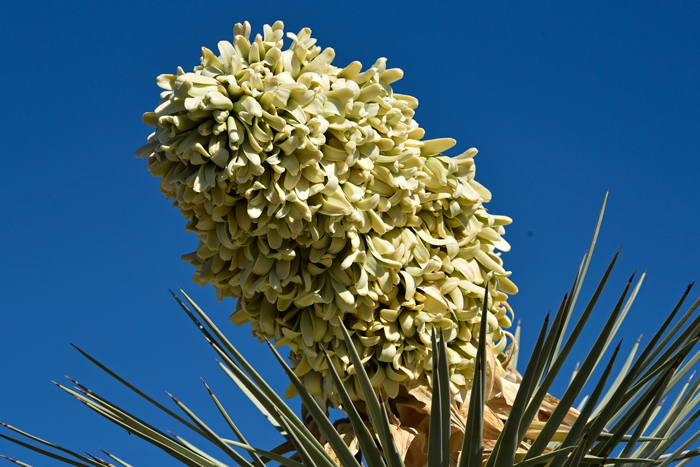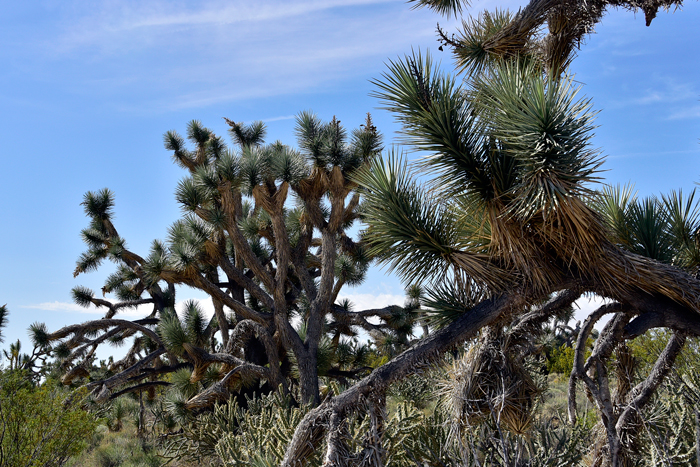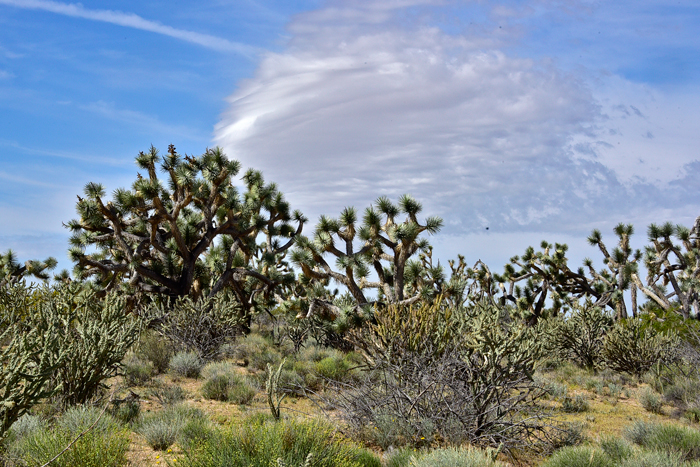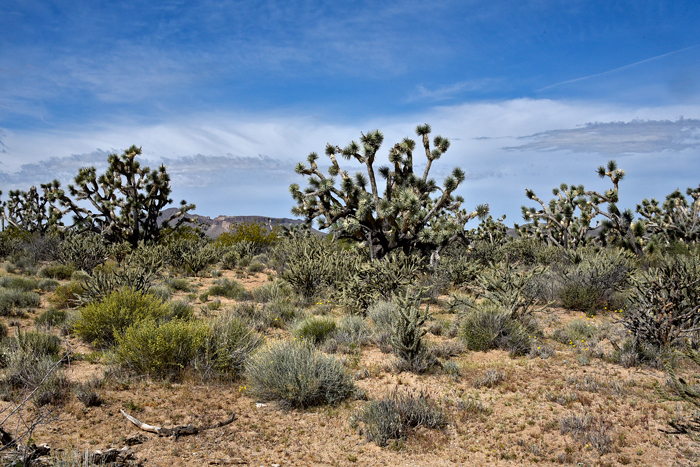Yucca brevifolia, Joshua Tree




Scientific Name: Yucca brevifolia
Common Name: Joshua Tree
Also Called: Jaeger's Joshua Tree
Family: Agavaceae, Agave or Century Plant Family (Reclassified to Asparagaceae)
Synonyms: (Clistoyucca brevifolia, Yucca brevifolia subsp. jaegeriana, Yucca brevifolia var. brevifolia, Yucca brevifolia var. herbertii, Yucca brevifolia var. jaegeriana, Yucca jaegeriana)
Status: Native
Duration: Perennial
Size: 20 to 40 feet or more; size and growth vary between location; tree trunks from 1 to 3 feet in diameter.
Growth Form: Shrub, tree; plants solitary; erect; arborescent (tree-like); branched high above the base.
Leaves: Green, bluish-green; leaves up to 18 inches long; clustered in rosettes at branch tips, smooth, glabrous, fibrous, rigid, margins sharply but minutely toothed (dentate); leaves clustered at ends of branches.
Flower Color: White, greenish-white to cream; flowers erect; sepals and petals similar (tepals) lanceolate to oblong; inflorescence erect; paniculate; densely crowded, partially enclosed in rosette; fruits pendent, indehiscent; semi-capsular becoming dry and spreading.
Flowering Season: March to May; late winter-mid-spring in California.
Elevation: Up to 3,500 feet; 1,200 to 5,500 in California.
Habitat Preferences: Variable, large open areas, rocky hillsides, soils rocky or sandy.
Recorded Range: In North America Joshua Trees are found only in the southwestern United States in AZ, CA, NV, UT; northwest AZ, southeast CA, southern NV and extreme southwest UT.
North America & US County Distribution Map for Yucca brevifolia.
U.S. Weed Information: No information available.
Invasive/Noxious Weed Information: No information available.
Wetland Indicator: No information available.
Threatened/Endangered Information: In North America Yucca brevifolia is listed as "Salvage Restricted" by the state of Arizona. In Nevada, both the Joshua Tree and Jaeger's Joshua Tree are "Protected" as a Cactus, Yucca, or Christmas Tree.
In the Southwestern United States: Arizona has 8 species of Yucca, California has 3 species, Nevada has 5 species, New Mexico has 10 species, Texas has 18 species, Utah has 7 species. All data is approximate and subject to taxonomic changes.
There are 2 varieties in Yucca brevifolia (not recognized by Flora of North America);
Yucca brevifolia var. brevifolia, Joshua tree, (AZ, CA, NV, UT);
Yucca brevifolia var. jaegeriana, Jaeger's Joshua Tree (AZ, CA, NV, UT).
Comments: Joshua Trees are diverse in terms of desert habitats. This species has characteristics of Sonoran, Mojave and Great Basin deserts. Similar to Ocotillo and Saguaro, Joshua Trees provide an iconic silhouette often used in cowboy or western themed films and classic art renderings. Yucca brevifolia is very abundant where found in population, often large dense forests, however this species is not considered to be a true dominant in terms of over-all abundance.
Joshua Tree flowers are insect pollinated, thought to be pollinated principally by Yucca months of the genus Tegeticula.
Joshua Trees are used as landscape specimens in large desert or upland settings. The large size precludes use in smaller residential landscapes.
In Southwestern Desert Flora also see: Banana Yucca, Yucca baccata; Blue Yucca, Yucca rigida; Beaked Yucca, Yucca rostrata; Eve's Needle, Yucca faxoniana and Soaptree Yucca, Yucca elata.

